Last Updated on June 2, 2025 by Jocelyn
Lavender grows well with rosemary, thyme, sage, and oregano as all prefer dry, well-drained soil and full sun. Avoid planting lavender near moisture-loving crops like basil or mint which require different growing conditions.
Lavender is a perennial herb known for its aromatic flowers which attract pollinators and beneficial insects.
It grows well in full sun, well-draining soil, and dry conditions, making it ideal for container gardens and fragrance gardens.
Lavender is used for culinary, medicinal, and decorative purposes. Its strong stems and natural resistance make it easy to grow.
Pair it with other drought-tolerant plants that prefer similar growing conditions to support healthy growth and a successful garden.
Table of Contents
ToggleBest Lavender Companion Plants
When choosing the best companion plants for lavender, it’s important to consider their complementary traits.
Look for plants with similar growing needs and structures that enhance the beauty of your garden. These plants should also have color, shape, and texture that blend well with lavender.
Additionally, companion plants can provide benefits such as repelling pests, reducing maintenance, and attracting pollinators. This thoughtful combination will create a harmonious and flourishing garden that requires less effort to maintain.
Here are some of the best companions which grow well with lavender:
1. Thyme
Thyme is a great companion plant for lavender. It is an aromatic herb from the Mediterranean region and thrives in full sun with sandy soil or loamy soil.
Thymus vulgaris, also known as classic garden thyme, has a creeping growth habit and can be used as low-maintenance groundcovers to suppress weeds.
Creeping thyme varieties, like Thymbra capitata and Mediterranean Wild Thyme, are cold hardy, and act as a natural pest repellent against moths, fleas, flies, and mosquitoes.
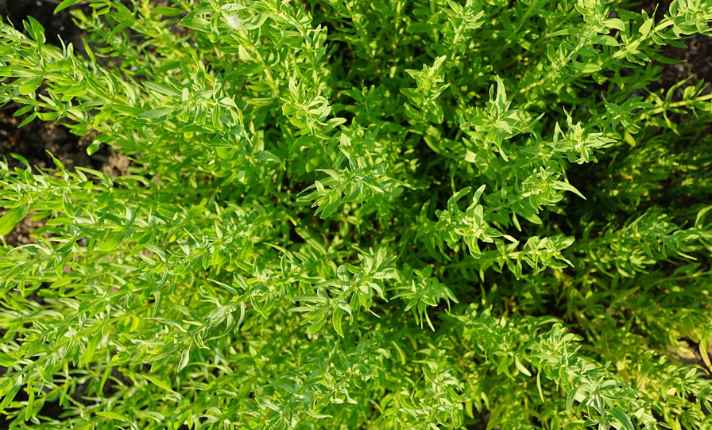
They also serve as a moisture-retaining mulch and provide a partial shade barrier. In my herb garden, I love how thyme creates a visual contrast with its pink blooms and white blooms beneath the taller stalks of lavender.
It’s amazing to see how these plants thrive together, forming a pest-resistant garden with a beautiful ornamental carpet.
2. Sage
I love planting sage next to lavender in my garden. Both aromatic herbs need full sun and well-drained soil. They are perfect for a low-maintenance, xeriscape garden because they share similar water needs and can handle drought.
Sage and lavender have strong scents that help deter pests like moths, beetles, and certain flies. This combination also looks visually appealing with different leaf textures and colors.
Sage’s dense foliage helps suppress weed growth around lavender, reducing competition for nutrients.
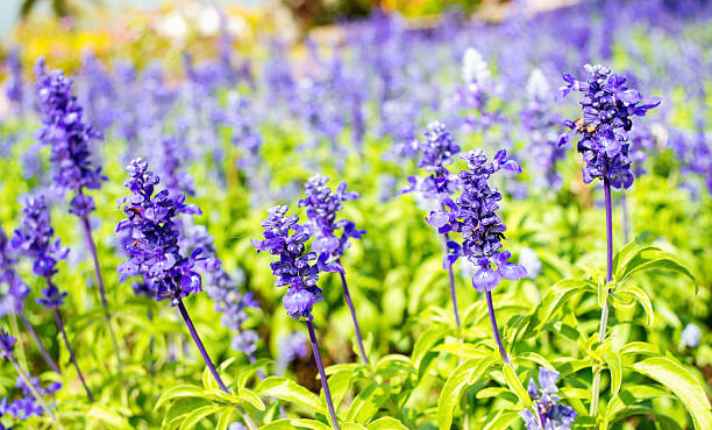
Planting sage with lavender can even make the lavender more fragrant by boosting its essential oil content. It’s fun to squeeze sage plants between lavender and rosemary to add more dimension to the planting.
3. Rosemary
Rosemary and Lavender make excellent garden companions, needing full sun, hot, dry conditions, and well-drained soil like in Mediterranean climates.
Both prefer low-nutrient soils with a pH of 6.0-7.5. Rosemary requires frost protection in colder zones as it is less cold-hardy than Lavender.
In my garden, I love how Rosemary’s fragrance blends with Lavender’s bee-attracting flowers in spring and summer.
With regular pruning, Rosemary can grow up to 4 feet tall and wide. Planting them together in border beds creates a beautiful and functional garden layout.
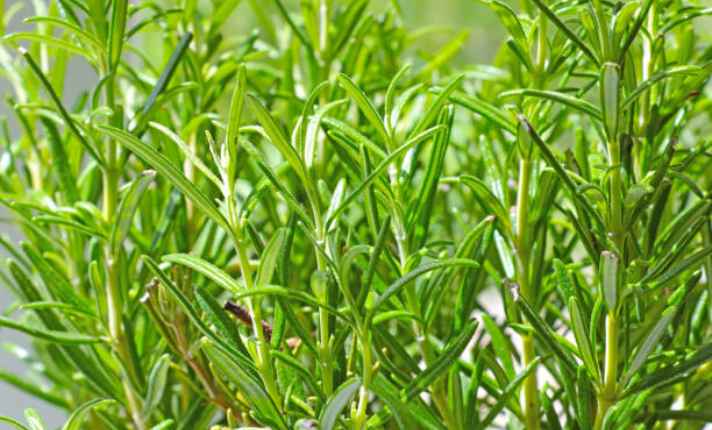
Both plants have similar cultural needs and are drought tolerant in poor, rocky soils. Additionally, Lavender helps maintain a stable microclimate around Rosemary by reducing soil moisture evaporation.
Both have a shrublike look with woody stems, adding visual appeal.
4. Oregano
Oregano is a low-maintenance plant that grows well with lavender. It can help repel aphids and small flies, protecting your garden.
Oregano grows between 6 to 36 inches tall and 8 to 24 inches wide, with purple flowers that bloom in summer and fall.
It thrives in full sun and partial shade and tolerates drier soil and slight shade. Oregano is also a culinary herb and attracts bees and other insect pollinators. Creeping or spreading forms can work as ground cover or in rockeries.
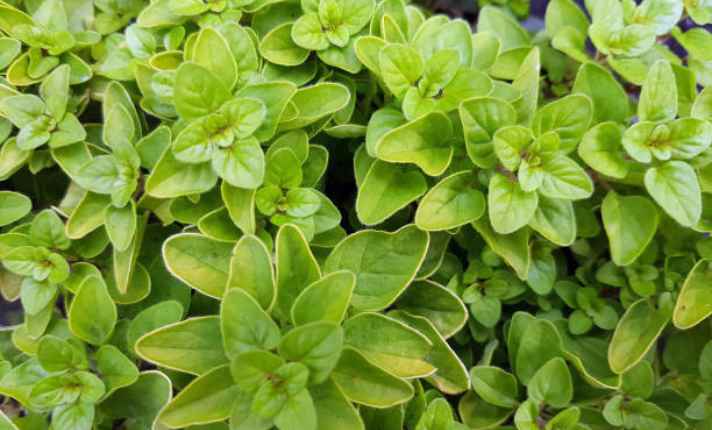
This cold hardy plant is useful in edging and benefits from well-drained soil. It’s a perfect predator host, attracting lacewings to eat whiteflies and moths. Oregano fits in USDA Hardiness Zones 4-10 depending on the variety.
5. Yarrow
Yarrow is a superb companion for lavender. Both plants enjoy full sun and are drought-tolerant perennials. Yarrow comes in many colors like purple, white, yellow, pink, orange, and red, and flourishes in well-drained soil.
This North American native wildflower has an upright spreading habit and blooms from summer to early fall with flat-topped flower clusters.
It grows well in dry conditions and provides a nice contrast to lavender’s pastel spikes.
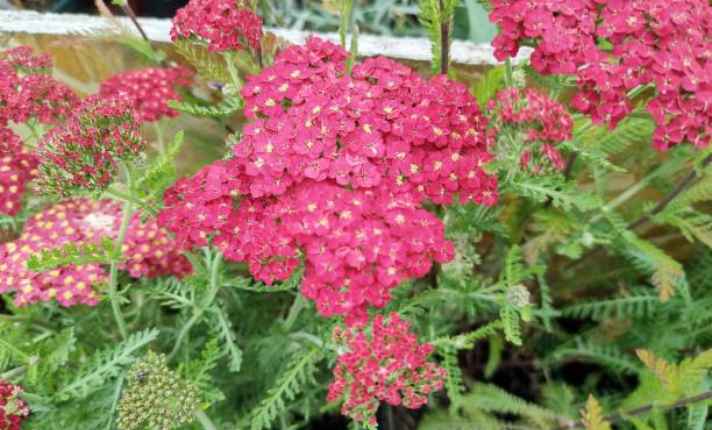
Plant them together in a mixed border or waterwise strip for a vibrant and low-maintenance garden.
6. Roses
Roses love the sun and grow in various conditions and USDA hardiness zones. They often attract aphids, but lavender brings in ladybugs to eat those pesky bugs. Lavender’s strong scent can also keep deer away from your roses.
Both plants look beautiful together with their different flower colors and textures. You can find compact rose varieties to grow in pots with lavender or plant them in a mixed bed arrangement.
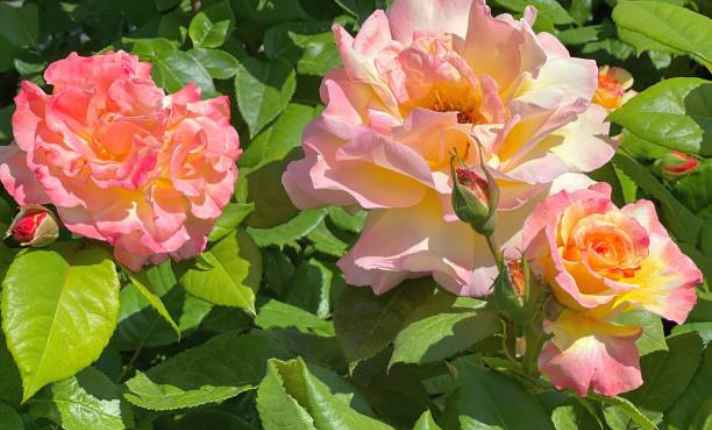
Just remember, roses need more water and richer soil than lavender, so give them some space. And enjoy their fragrant flowers from late spring to fall.
7. Coneflower
Coneflowers are beautiful ornamental plants that have purple blooms and are a great companion to lavenders. They are perennial and self-seeds easily, making them come back every year.
These echinacea flowers thrive in full sunlight and well-drained soil, and they attract bees and butterflies to your herb garden.

The tall spiky heads of coneflowers look amazing next to lavender’s subdued violet spikes, creating a lovely contrast. They also provide food for wild birds in autumn and summer.
8. Catmint
Catmint is a great friend of lavender in the garden. Both are cold hardy and perennial plants that love full sun and well-drained soil. Together, they make a low-maintenance garden look beautiful.
Catmint (also called Nepeta spp.) grows well in USDA Hardiness Zones 4-8 and can handle partial sun. It has a mounding or spreading habit and blooms from late spring to fall. This herbaceous plant is very tough and can survive drought conditions.
Planting catmint along the border or in a curbside strip attracts bees, butterflies, and other pollinators while keeping away pests and weeds.
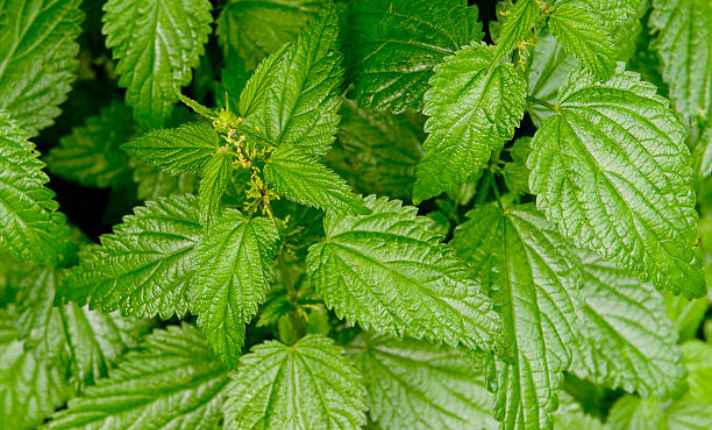
Its roots help improve soil microbes and soil health, which boosts the growth and flower production of both plants, leading to higher yields. It goes dormant in winter and re-sprouts in spring. Pruning is easy, making your garden care a breeze.
9. Sedum
Sedum is a great partner for lavender, thriving in gravelly or rocky beds with low-fertility, alkaline soils. Available in colors like white, pink, red, orange, and salmon-color, it blooms from late spring to fall.
This ornamental plant fills empty spaces between lavender shrubs and survives frigid conditions in zone 3 through winter. It needs low watering and provides pollen and nectar for pollinators in autumn.

Sedum grows well in zones 3-9 with full sun or partial shade, reaching 1 to 3 feet tall and wide. There are hundreds of sedums, some are low growing and can be used as a groundcover around lavender to suppress weeds and conserve soil moisture.
10. Allium
Allium is a great companion for lavender. These plants have tall, globe-shaped flowers that add a nice surprise to the garden. Allium can protect lavender with its antibacterial and anti-fungal properties.
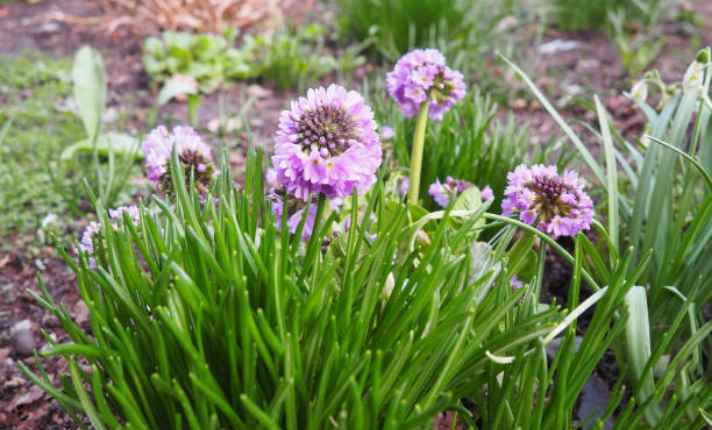
Garlic in the allium family also helps repel pests and suppress soil-borne pathogens. Bloom in the spring and summer, they grow well in zones 4-10 and prefer full sun. Their upright habit makes them perfect for filling gaps in your mixed landscapes.
11. Marigolds
Marigolds are great companions for lavender. They repel pests like nematodes and add a beautiful visual contrast with their bright, colored flowers. Both plants thrive in full sun and well-drained soil, making them easy to grow together.
Marigolds come in various sizes and their yellow and orange flowers complement the cool purple tones of lavender. Marigolds can suppress underground pests, while lavender attracts pollinators that benefit marigold flowers.
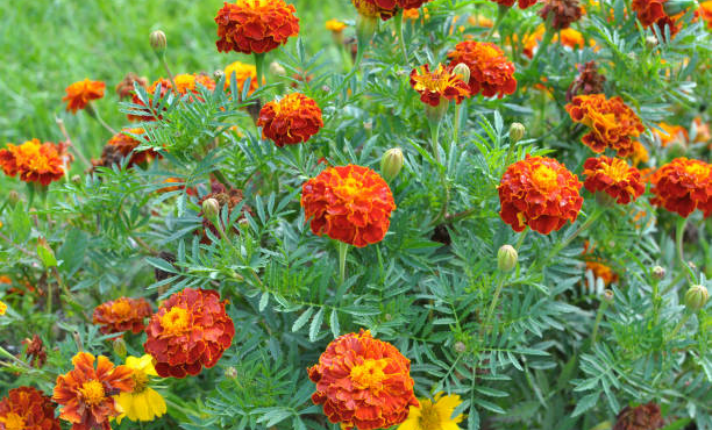
They have similar water requirements and can be grown as annuals in many zones. Planting them together not only beautifies your garden but also protects it from above-ground and underground pests.
Whether in a kitchen herb garden or a larger garden, these two plants are a perfect pair.
12. Zinnia
In my garden, I love planting zinnias with lavender. These colorful flowers really flourish in the summer heat and sunshine. Zinnias come in many colors like red, orange, pink, yellow, purple, and white, adding a vibrant touch to the herb bed.

They can handle humidity, and drought, and need little water. Plus, zinnias attract helpful pollinators and predatory insects that keep pests away from my vegetable plants.
Their upright, compact, and bushy shape makes them perfect for any height and spread in the garden.
13. Blue Fescue
Blue fescue is an attractive and drought-tolerant companion for lavender. These silvery-blue grasses have an icy color and pastel flowers. Planting it in moist, well-drained soil with Full sun or partial sun meets its growing requirements.

Blue fescue grass can be planted along the border or within a prairie-style garden, adding a textured interruption. It tolerates a bit of shade from neighboring bushes like rosemary and doesn’t need irrigation.
Festuca glauca does well in USDA Hardiness Zones 4-8 and is perfect for planning next to lavender.
Curious about companion planting? Check out my other guides!
What Not to Plant With Lavender
Lavender is a beautiful plant that loves the sun. It needs full sun and lots of sunlight to grow well. The best companion plants for lavender are those that are also sun-loving plants and don’t need too much water.
| Plant Type | Reason |
| Thirsty Plants | Need frequent watering and can’t tolerate dry conditions: ferns, hostas, hydrangeas |
| Water-Loving Plants | Require consistently moist soil and regular watering: Mint, Camellia, Fuchsia |
| Shade-Loving Plants | Need shade and can’t tolerate full sun: violets, impatiens, polyanthus, Hosta |
| Plants That Need Rich Soil | Prefer nutrient-dense soil: many vegetables, fruits |
| Acid-Loving Plants | Thrive in different pH levels: rhododendrons, azaleas, blueberries, gardenias |
| Plants Prone to Fungal Diseases | Can develop fungal diseases in humid conditions: phlox, zinnias |
| Invasive Plants | Can spread aggressively and overwhelm lavender: mint |
Tips for Growing Lavender with Companions
Here are some tips to help you cultivate a beautiful lavender garden alongside its perfect plant companions.
Whether you’re aiming to enhance your garden’s aesthetics or boost its productivity, these guidelines will ensure your lavender grows well with other plants.
Ideal Soil and Sunlight Conditions
Lavender prefers well-drained soil with some gravel or sand mixed in. It grows in direct sunlight for most of the day. The soil should be slightly alkaline with a pH of 6.7 and 7.3.
Proper Watering and Maintenance
Water your lavender deeply, but allow the soil to dry out between waterings. Avoid overly wet or damp conditions, as lavender prefers well-drained soil. Prune in early spring to promote better blooming and overall growth.
Planting and Layout Tips
Plant lavender in a border or tiered garden with taller plants behind it. Ensure the roots have good drainage and enough depth. Keep lavender away from waterlogged areas to prevent root rot.
Fertilizing for Optimal Growth
Use fertile soil but don’t over-fertilize. Lavender can handle poor soil better than too much fertilizer. Deadhead spent flowers to keep the plants looking neat and to encourage more blooming.
FAQ’s
Q: How to Make Lavender Grow Faster?
A: To make your lavender grow faster, prune the old, woody stems in spring by about one-third. This helps stimulate new growth, leading to better, more fragrant flowers and foliage.
2-year and older plants especially benefit from this cutting.
Q: How to Keep Lavender Blooming?
A: To keep lavender blooming, nip the tips of the branches in mid-spring. Pruned lavender helps stimulate new growth and more flowering spikes.
In summer, remove faded flower stems and deadheaded foliage to encourage more blooms.
Q: Does Lavender Grow Better in Pots or Ground?
A: Lavenders can grow well in pots or in the ground. Smaller varieties are better suited for pots, but even large lavenders can thrive in pots for several years before being transplanted into the ground.
Dwarf lavenders are ideal for small spaces, while mature shrubs do well in the ground.
Q: How Long Do Lavender Plants Last?
A: Lavender plants can survive for 10-15 years if they are pruned regularly. When flowering ends, shear the plant back to keep its size manageable and stimulate new growth.
Pruning helps the plant become bushier and more lively. Proper shaping can extend the longevity of your lavender, which improves its productivity.
Q: What Is a Good Fertilizer for Lavender?
A: Lavender grows best with compost, a slow-acting organic fertilizer. Mix it in small quantities directly into the plant soil.
Avoid using bark mulch, horn shavings, peat, and conventional flower fertilizers as they are not suitable for lavender due to their high nitrogen or acid content.
Conclusion
Lavender pairs well with plants like rosemary, thyme, and sage. These plants prefer similar conditions, such as full sun and well-drained soil.
Lavender is also effective at keeping pests away, including mosquitoes and aphids, making it a valuable addition to any garden.
When selecting companion plants, it’s important to choose those with similar water and light needs to ensure healthy growth.
By combining lavender with compatible plants, gardeners can create a low-maintenance, pest-resistant garden that flourishes with minimal effort.
Thoughtful pairings can enhance both the beauty and overall health of the garden.

